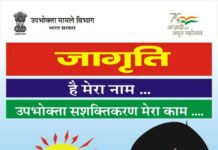The story of the Kanjeevaram silk saree begins in Hindu mythology. Legend has it that the Kanchi silk weavers are descendants of Sage Markanda, who was considered to be the master weaver for the Gods themselves.
Settled in the small town of Kanchipuram (Tamil Nadu), the famous Kanjeevaram saree weave goes back 400 years. It was during the reign of Krishna Devaraya (from the Vijayanagara Empire) that the art really took off. Two major weaving communities of Andhra Pradesh, the Devangas and Saligars migrated to the town of Kanchipuram. They used their excellent weaving skills to make the silk saree that bore images of scriptures and figurines found on the temples around the village.
It didn’t take long for the saree to evolve into a must-wear for women at traditional ceremonies, weddings and other festivities, and the practice still continues in South India.

Weaving process
Kanchipuram silk sarees are woven from pure mulberry silk. While the silk belongs to South India, the pure gold and silver zari comes from Gujarat. The silk thread that is used to weave the saree is dipped in rice water and sun-dried before it is used in order to increase both, its thickness and stiffness. The silk thread is then interlocked with a thin silver wire and woven through after which a golden thread is used to complete the procedure.
The warp frame use to weave this fabric has about 60 holes, in which there are 240 threads in the warp and 250 to 3000 threads in the weft, giving it a sturdy feel. The pallu, the border and the body of the saree are generally woven separately, and then interlocked together with much precision and neatness.

Special features
Since the colour and designs of the body, and the pallu are quite different, weavers weave both of them separately and eventually join them. You can spot a zig zag pattern (known as the pitni) where the body meets the pallu. It is also quite a common practice to weave the border of the saree separately and then join the three together. The joining of the three (known as korvai) is done with such precision that even if the saree tears, the border will not detach.
Also since the zari is made of three silk threads twisted with a silver wire, the fabric is extremely strong and durable. This, however, can also add to the weight, making a regular Kanjeevaram saree as heavy as two kilos.
Colours
The sarees are known for their vibrant colours and eye catching designs, which are mainly inspired from the scriptures and figurines from the very many temples in this small village. Since the pallu and the body of the saree differ in colour and design, you can expect a variety of contrasting shades too.
Motifs
Ever since its inception, Kanchipuram silk sarees have stayed true to the inclusion of temple figurines and mythological stories into the design.
The border of the saree comprises of motifs from the temples, palaces and general paintings, and the body includes pyramidal temple designs, checks, stripes and floral buttas.
Over the years, the traditional and much preferred stripes or golden dot designs have given way to more symbolic motifs such as fruits, animals, birds, the sun and the moon, and even stories from mythology.
Varieties
Kanchipuram silk sarees were initially a nine-yard weave but over the years the more practical six-yard weave was included too. The original golden and silver zari is also now replaced by a cost effective metal or copper zari that manages to hold on to the sheen of the texture while reducing the cost. However, if you want an original you need to ensure that the zari work is not artificial.

Current state of the art
Kanchipuram sarees have been recognized as a Geographical Indication by the government since 2006. This can be considered as a mark of authenticity and has helped improve the sales of Kanjeevaram silk sarees. As of now there are about 5,000 families involved in the production and there are 15 silk and cotton yard industries and 60 dyeing units in the region to aid the production process.
A Tamil film titled Kanchivaram was also made in 2008, on the weavers, which helped get their problems into mainstream media focus. Last year, the government introduced a policy to promote e-marketing of local handlooms. Thirteen e-commerce entities have partnered with the Office of the Development Commissioner (Handlooms) to market handloom products from the weavers themselves. What this means is that now when you go online to buy a Kanchipuram saree, chances are the fabric is coming directly from the weaver, allowing them to make a decent profit.






